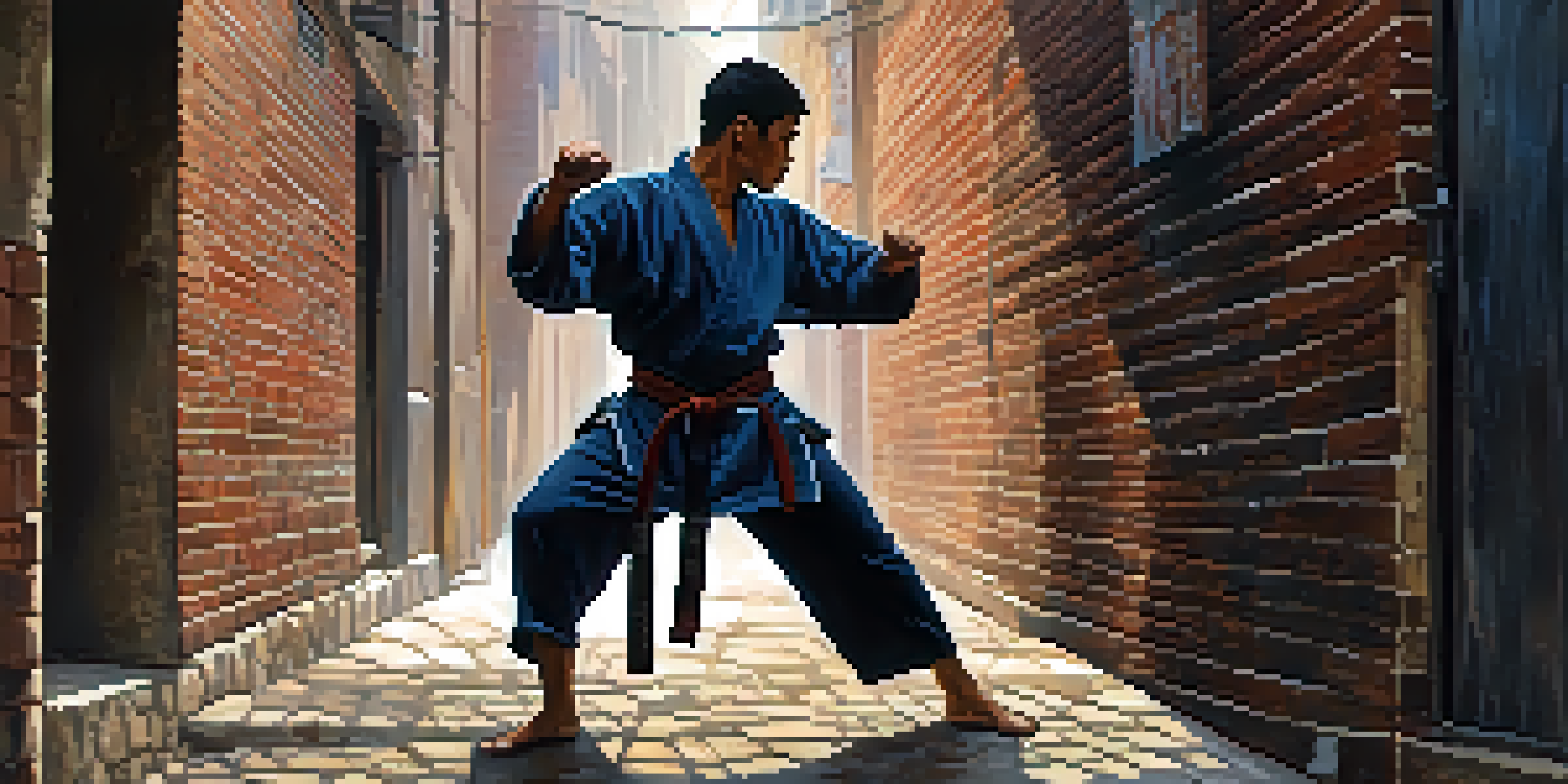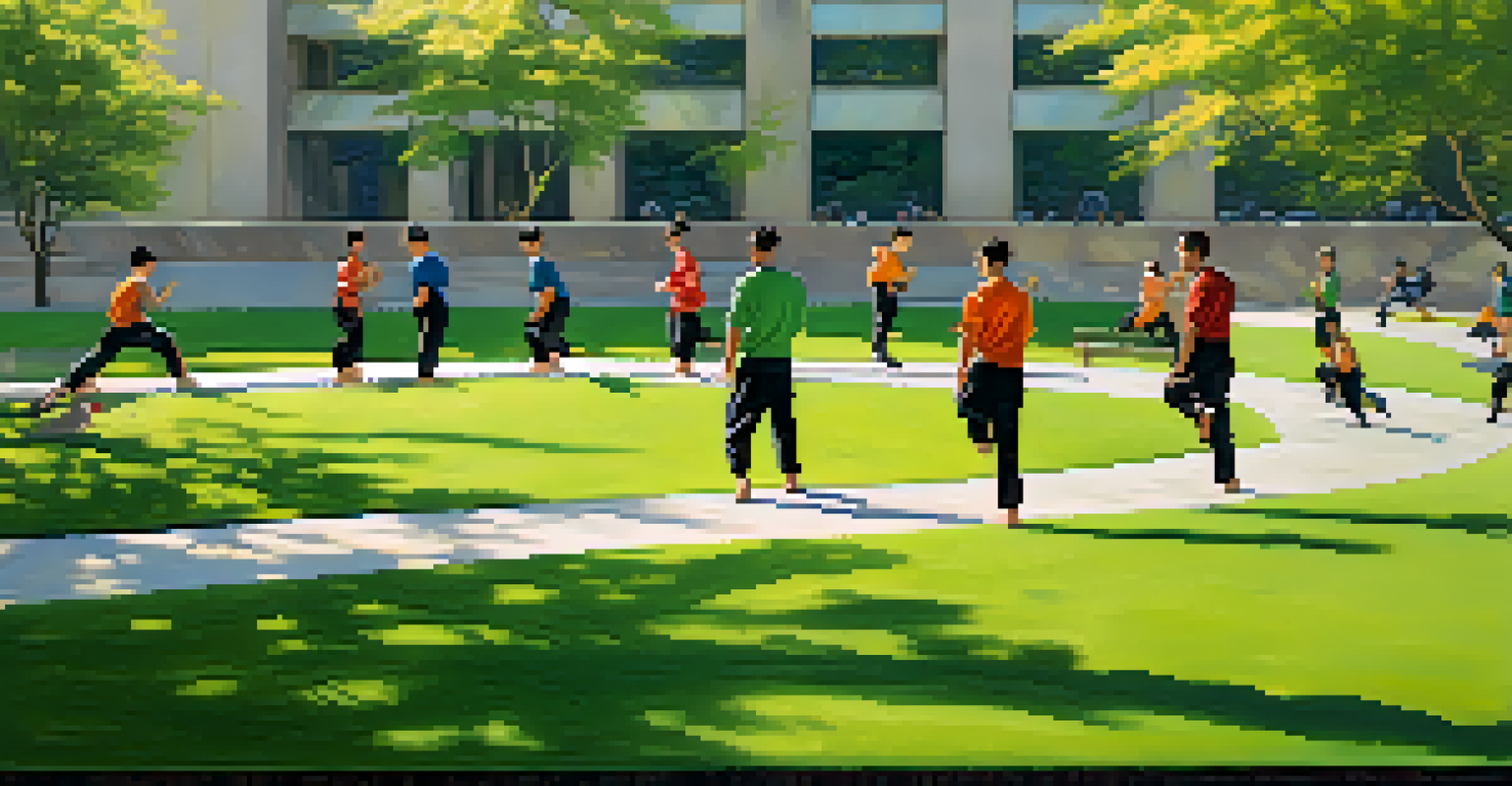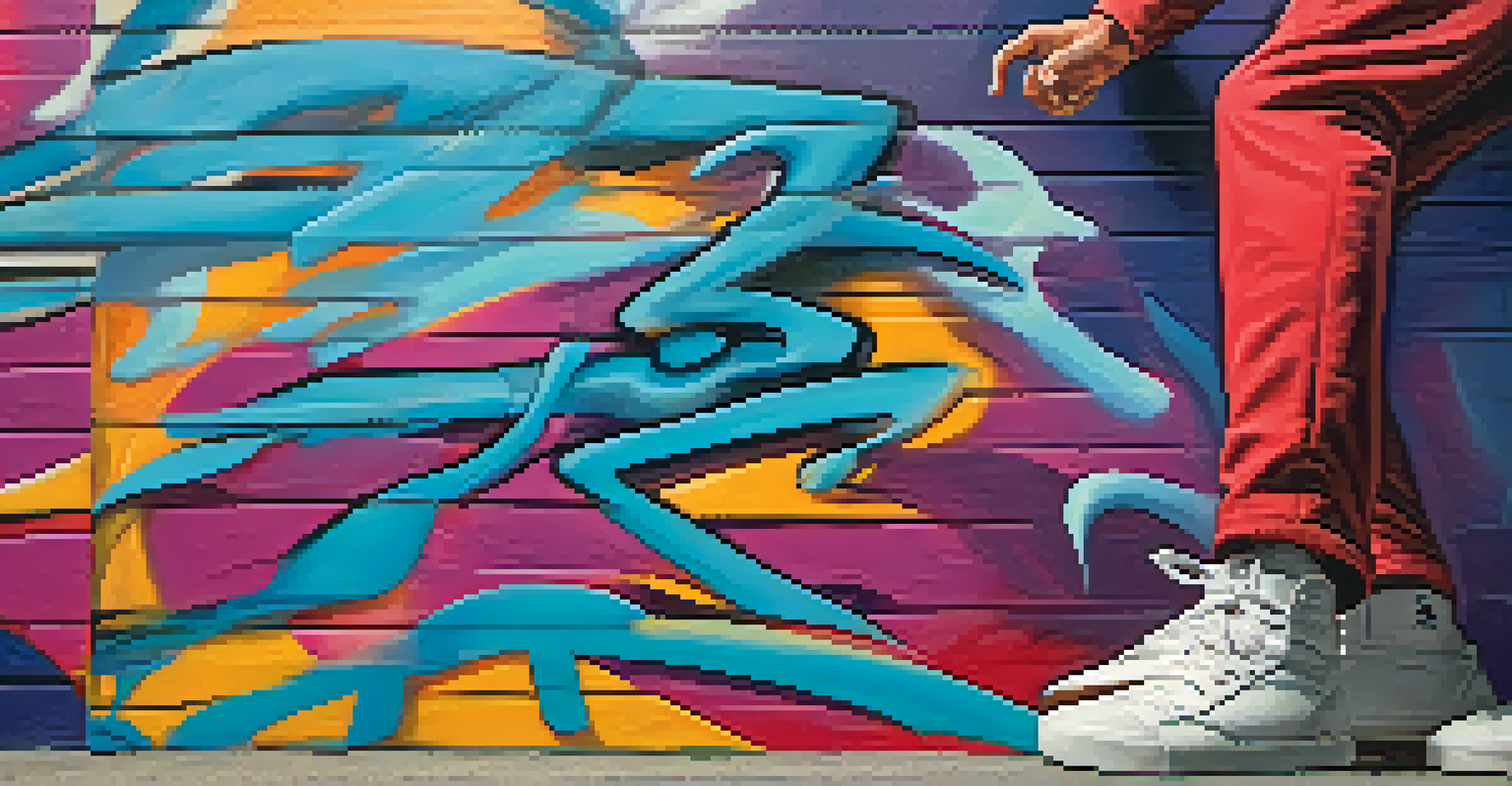Martial Arts in Urban Environments: Adapting Techniques

Understanding Urban Environments and Their Challenges
Urban environments present unique challenges for martial artists, such as limited space and the presence of obstacles. Navigating crowded streets or tight alleyways requires a different mindset than traditional practice in open spaces. Understanding these dynamics is crucial for adapting techniques effectively to ensure safety and effectiveness.
Martial arts is not about the physical strength; it's about the mental strength and the ability to adapt.
For instance, a roundhouse kick may need to be modified in a narrow alley to avoid hitting nearby obstacles. Similarly, awareness of surroundings becomes paramount; a fighter must always be cognizant of potential escape routes or hazards. This adaptation not only enhances defensive capabilities but also improves overall situational awareness.
Moreover, the urban setting often entails unpredictable encounters, which means martial artists must be prepared to respond swiftly and creatively. This adaptability can make martial arts training more relevant and empowering for those who practice in the city.
Adapting Techniques for Limited Space
In urban environments, space is often at a premium, requiring martial artists to adjust their techniques accordingly. For example, techniques that require wide movements might be replaced with shorter, more compact strikes. This shift not only conserves energy but also enhances efficiency in close-quarter scenarios.

Imagine practicing a jab or an elbow strike instead of a full kick when in a cramped area. Such modifications can be crucial for self-defense situations where space is limited. Adapting techniques in this way allows practitioners to remain effective without sacrificing their safety.
Adapting Techniques for Urban Spaces
Martial artists must modify their techniques to suit the limited space and obstacles found in urban environments.
Training in confined spaces can also enhance a martial artist's ability to think on their feet. By practicing in these environments, they learn to use their surroundings to their advantage, whether it’s utilizing walls, furniture, or even the ground.
Utilizing Urban Obstacles as Training Aids
Urban landscapes are filled with obstacles that can be creatively incorporated into martial arts training. Park benches, walls, and even streetlights can serve as props for practicing techniques and improving agility. This not only keeps training engaging but also prepares martial artists for real-life scenarios where they may need to navigate similar environments.
In the midst of movement and chaos, keep stillness inside of you.
For instance, practicing vaulting over a low wall can enhance a martial artist's agility and help them respond to unexpected situations. Additionally, using these obstacles can simulate real-life encounters, providing a practical edge to training. Such creative adaptations not only maintain the fun aspect of training but also help in building muscle memory.
Furthermore, integrating urban obstacles into training fosters innovative thinking and problem-solving skills. Martial artists learn to improvise solutions to challenges they encounter, which is a valuable skill both on and off the mat.
The Role of Mental Preparedness in Urban Settings
Mental preparedness is just as crucial as physical training, especially in urban environments. The hustle and bustle of city life can create stress and distractions, making it essential for martial artists to cultivate focus and calm. This mental fortitude allows them to react effectively under pressure, which is often necessary in self-defense situations.
Practicing mindfulness and visualization techniques can help martial artists enhance their mental readiness. For example, envisioning potential scenarios they might encounter on the streets can prepare them for real-life situations. This not only boosts confidence but also improves their ability to think critically when faced with challenges.
Mental Preparedness is Key
Cultivating mental focus and calm is essential for martial artists to navigate the stress and distractions of city life.
Moreover, mental preparedness can aid in de-escalating potentially volatile situations. A calm demeanor can often diffuse tension, allowing martial artists to navigate conflicts without resorting to physical confrontation.
Community and Support in Urban Martial Arts
Engaging with a community of fellow martial artists is vital for growth, especially in urban settings. Training with others not only provides inspiration but also fosters a sense of camaraderie and support. In cities, where the pace of life can be overwhelming, having a community can be a source of motivation and encouragement.
Many urban martial arts schools emphasize teamwork through partner drills and group sparring sessions. These interactions not only enhance skills but also build friendships that create a supportive training environment. This community aspect can be particularly beneficial for those new to martial arts or self-defense.
Additionally, sharing experiences and techniques within the community can lead to innovative adaptations that are uniquely suited to urban environments. Collaborating with others often results in a richer training experience, where everyone contributes to each other's growth.
Safety Considerations for Urban Martial Artists
Safety should always be a priority for martial artists practicing in urban environments. This includes being aware of their surroundings and understanding how to evaluate potential threats. Practicing situational awareness enables martial artists to navigate city life more safely and confidently.
For example, learning to identify signs of trouble or knowing when to avoid certain areas is crucial. Martial artists should develop a keen sense of judgment about when to engage and when to retreat. Practicing techniques that emphasize self-defense over aggression is also essential in maintaining personal safety.
Community Enhances Training Experience
Being part of a supportive martial arts community in urban settings fosters growth, motivation, and innovative adaptations.
Moreover, understanding local laws regarding self-defense can help martial artists make informed decisions. Knowledge of legal implications allows them to respond appropriately in critical situations, ensuring they stay within the boundaries of the law.
The Future of Martial Arts in Urban Settings
As cities continue to evolve, so too will the practice of martial arts within them. The increasing popularity of urban martial arts has fostered innovation in techniques, training methods, and community engagement. This evolution is likely to continue as more people seek self-defense skills and personal empowerment.
Additionally, the rise of technology, such as virtual training and online classes, offers new opportunities for urban practitioners. Access to diverse styles and instructors can enhance learning experiences, allowing martial artists to adapt techniques from various disciplines to their urban environments.

Ultimately, the future of martial arts in urban settings promises to be dynamic and adaptable. As martial artists continue to refine their techniques and approaches, they will create a rich tapestry of skills that reflect the diverse nature of city life.